Two major protests were planned within the period between 20 and 24 February. On 20 February 2013, members of the 20 February Movement planned to commemorate their two year anniversary with a march in front of the Parliament building in Rabat. Unaffiliated with the movement and less than a block away in front of the Rabat Ville train station was a separate protest that a group of unemployed college graduates organized. Despite the similarity in chants, riot police had a clear target for their repression, and it was the unemployed graduates. While members of the 20 February Movement included even small pockets of students calling for the downfall of the regime, riot police wielded their truncheons against the unemployed graduates throughout the day. After each violent dispersion, the unemployed graduates regrouped and continued chanting and marching around the main roundabout on Mohammed V Avenue. It did not take long before members of the 20 February protest joined the unemployed graduates in solidarity, eventually taking their share of police beatings. While an ambulance was present, transporting those who were injured, no immediate arrests were made and a phone call with one of the unemployed graduates the next day confirmed that.
Despite the presence of international media and photographers, the 20 February anniversary was underwhelming. The movement drew onlookers who stood on the sidelines as they read banners and listened to chants, yet the alleged “decline” of the movement was evident, if only measured through the small presence of about two to three hundred in front of parliament. Other members of the movement discussed plans for another march on the upcoming Sunday, 24 February. Expectations seemed low for this upcoming march and the usual crowd was anticipated. When 24 February came, it seemed that both those within and outside the movement were surprised by the numbers that came out to protest on that Sunday following the movement’s two year anniversary.
True to the tradition of the movement’s Rabat chapter, members began mobilizing on 24 February in Bab el Had, the entrance to the souk. As the crowds grew, they began marching down the main road towards Parliament, about a ten-minute walk. Chants ranged from targeting the newly elected government, to solidarity with neighboring uprisings, to the adaptation of popular slogans and songs from other countries to fit the Moroccan context. As the crowd got closer to Parliament, the chants grew more antagonistic towards the Party of Justice and Development-led government: “Hadi houkouma? Hacha!” (This is a government? No way!); “Dar l’cravata, ou wlad cha`ab zerouata!” (He (Prime Minister, Abdelilah Benkirane) put on a tie and gave the children of the people the truncheon!)
Participants were pleasantly surprised with the larger crowds—some estimates measured the crowd at around one thousand. The protest in Rabat went about peacefully with no disturbance from riot police, while several regime supporters staged a counter protest. However, there were reports that protests outside of Rabat in coordination with the movement were met with violent police repression, both in Casablanca and the northern region.
Below are images and videos taken during the two protests on 20 February 2013 and 24 February 2013:
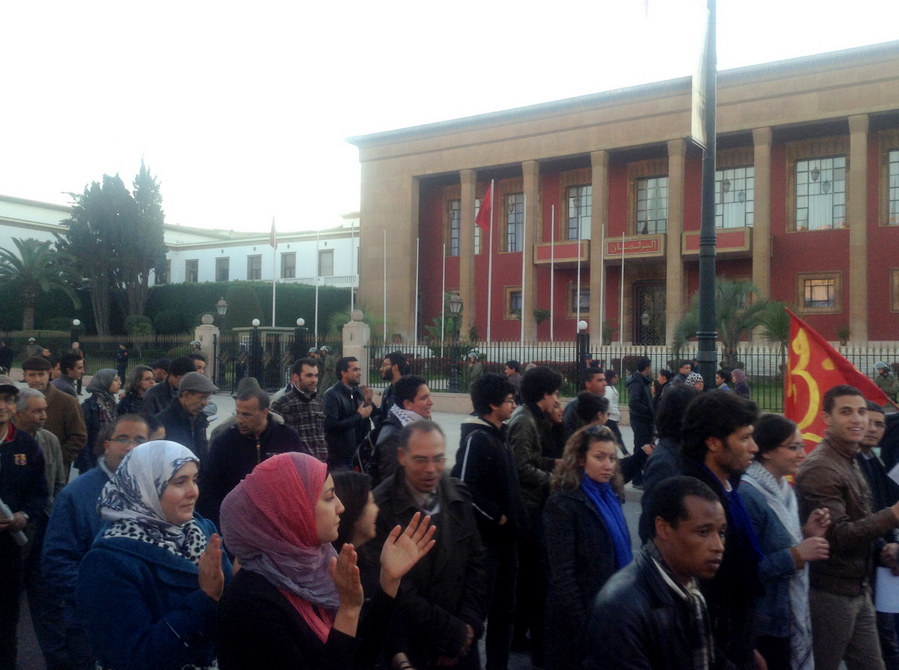
[Image from the protest on 20 February in Rabat, Morocco. Image taken by author.]
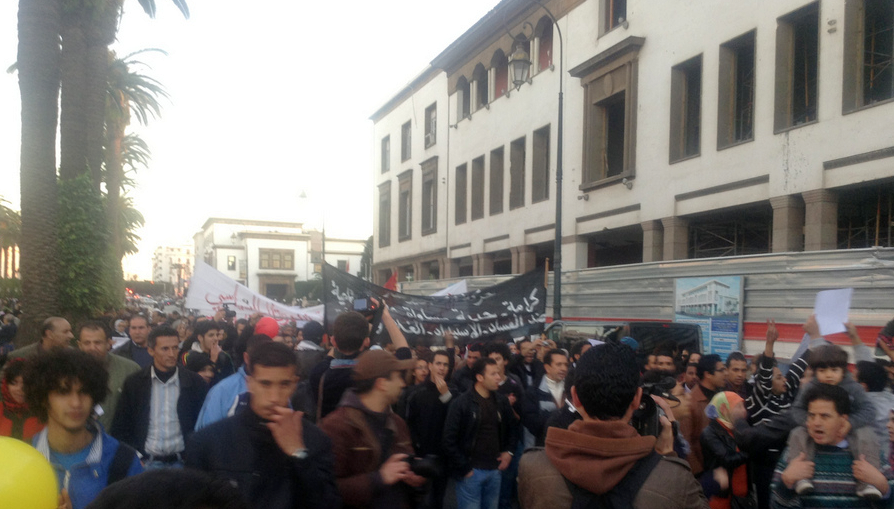
[Image from the protest on 20 February in Rabat, Morocco. Image taken by author.]
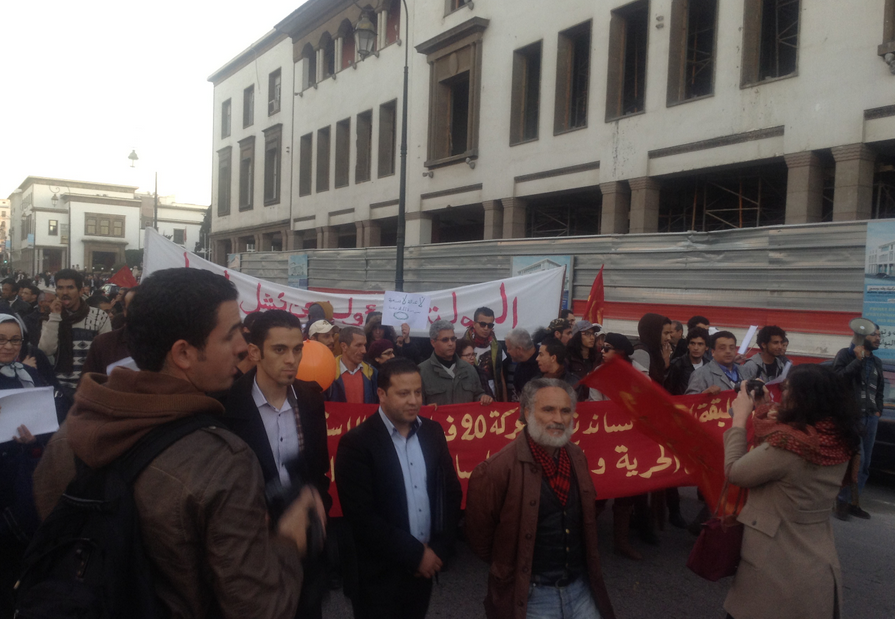
[Image from the protest on 20 February in Rabat, Morocco. Image taken by author.]
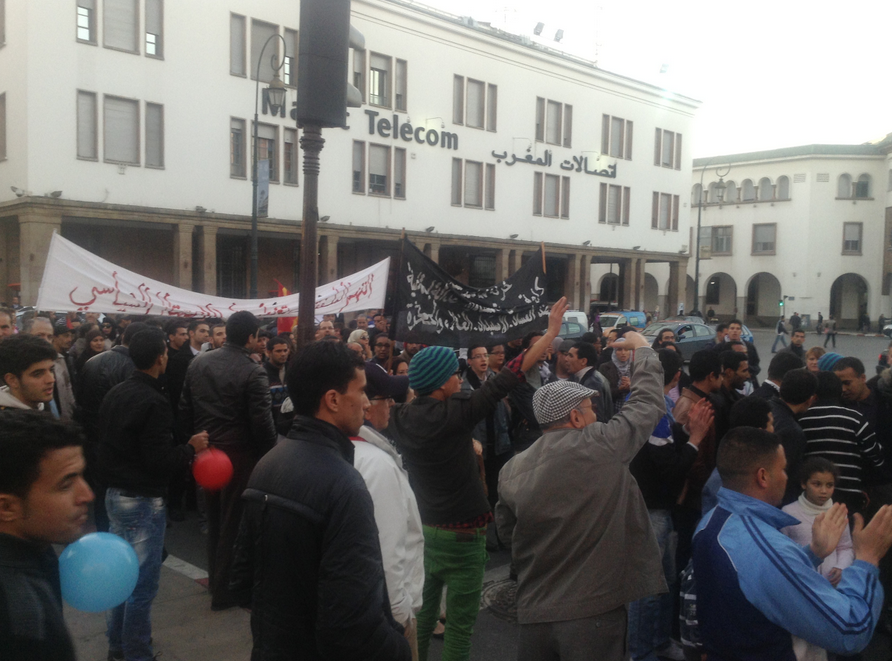
[Image from the protest on 20 February in Rabat, Morocco. Image taken by author.]
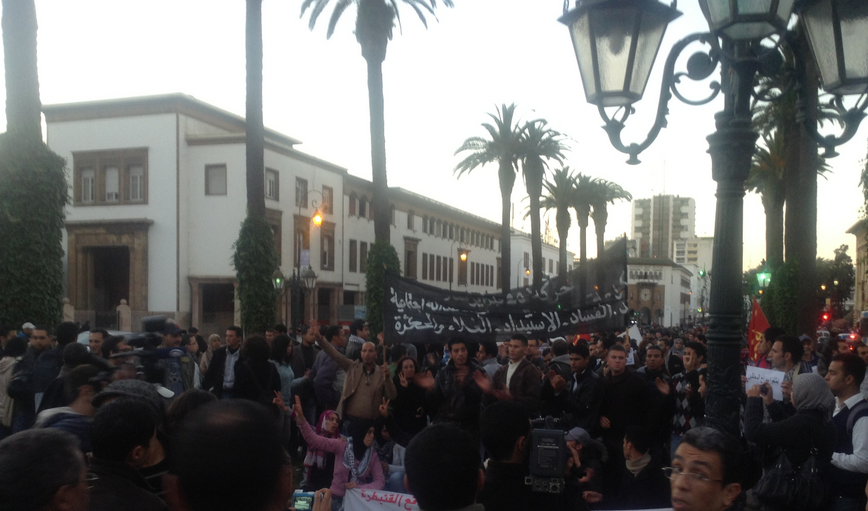
[Image from the protest on 20 February in Rabat, Morocco. Image taken by author.]
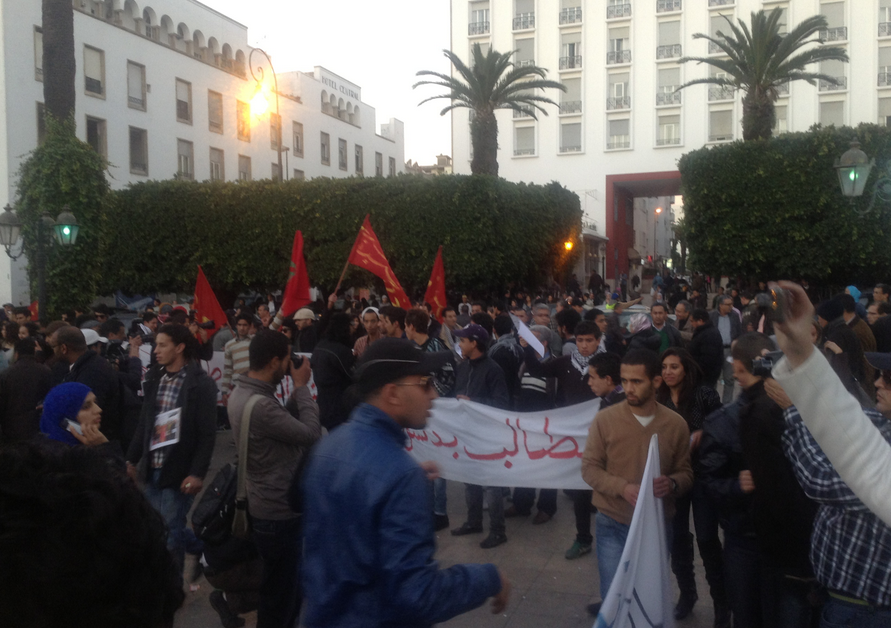
[Image from the protest on 20 February in Rabat, Morocco. Image taken by author.]
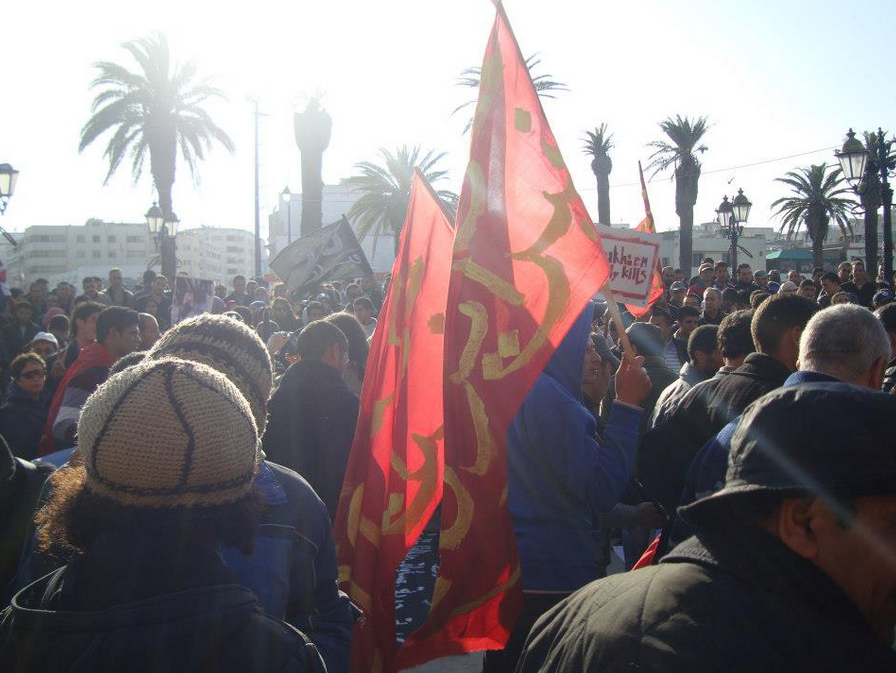
[Image from the 24 February protest in Rabat, Morocco. Image by Zineb Belmkaddem.]
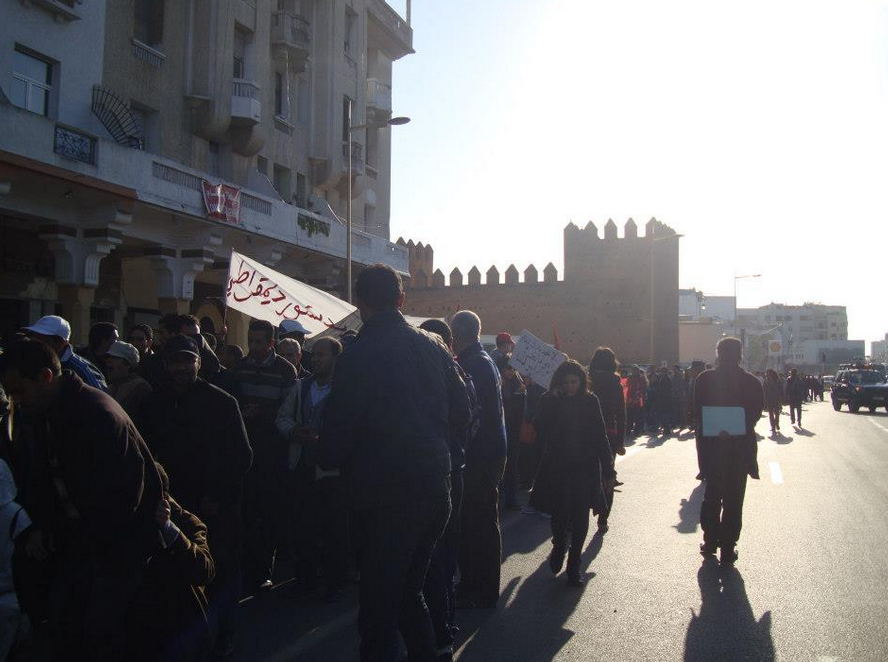
[Image from the 24 February protest in Rabat, Morocco. Image by Zineb Belmkaddem.]
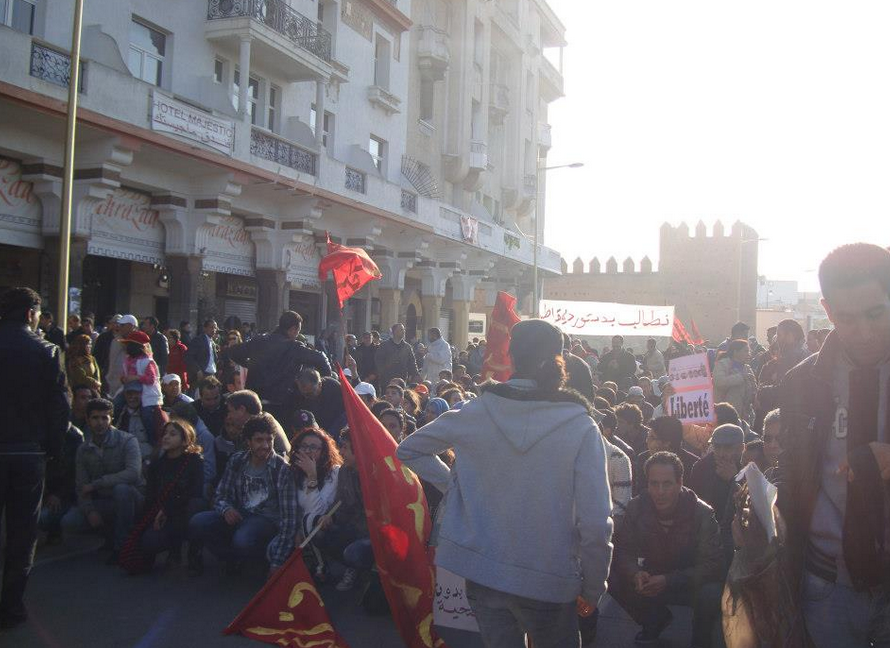
[Image from the 24 February protest in Rabat, Morocco. Image by Zineb Belmkaddem.]
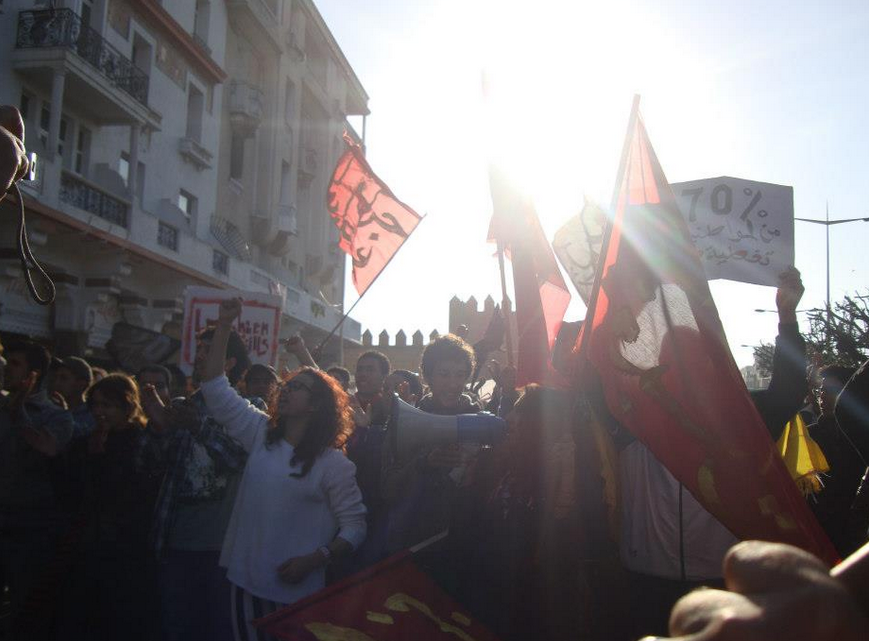
[Image from the 24 February protest in Rabat, Morocco. Image by Zineb Belmkaddem.]
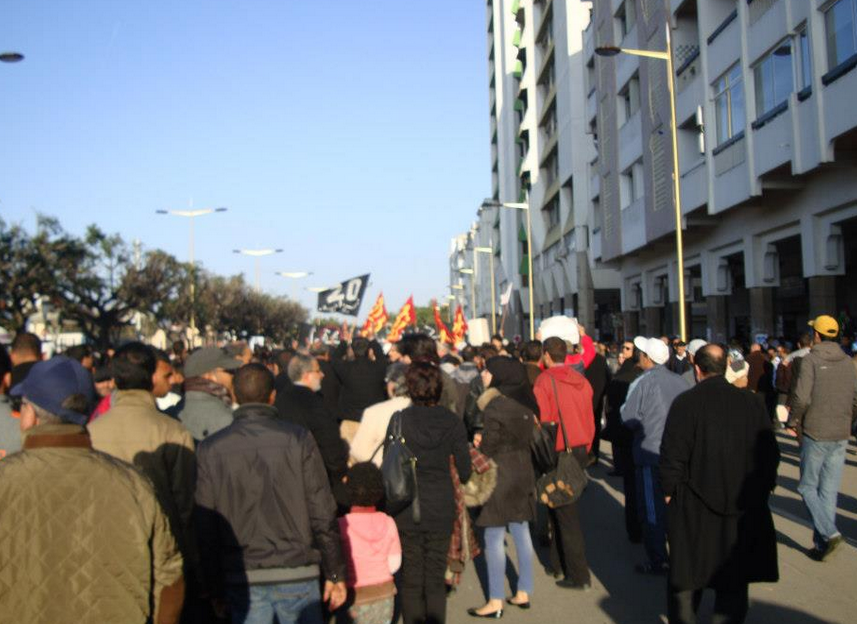
[Image from the 24 February protest in Rabat, Morocco. Image by Zineb Belmkaddem.]

[Image from the 24 February protest in Rabat, Morocco. Image by Zineb Belmkaddem.]
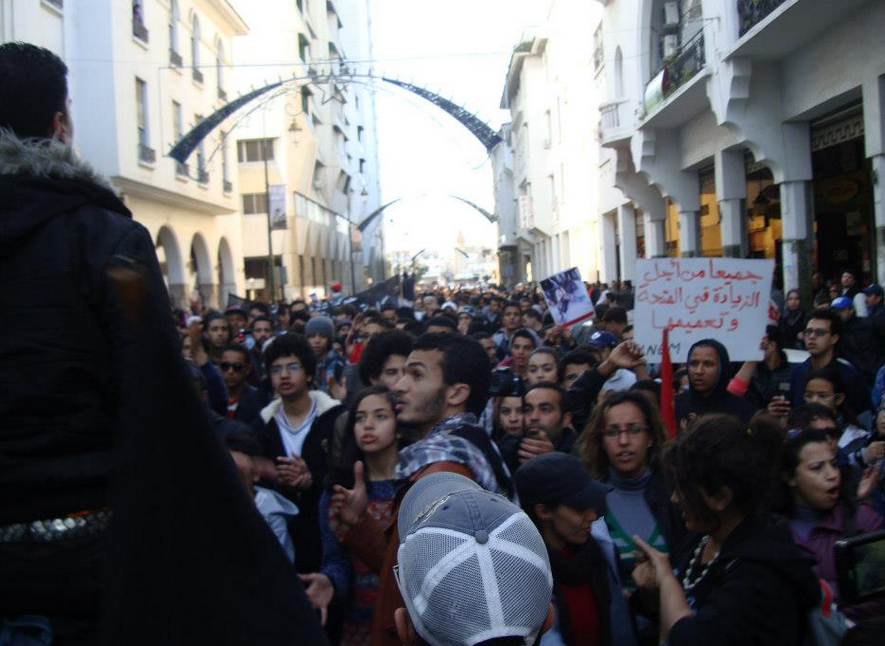
[Image from the 24 February protest in Rabat, Morocco. Image by Zineb Belmkaddem.]
Two years have passed since a group of Moroccans began spreading calls for a popular protest movement, demanding reforms and socioeconomic betterment. Through understanding their context of a country where support for the monarchy is widespread, members of the movement in its earlier moments were strategic in their demands: slogans emphasized reforms, chants focused on basic needs and rights, and the wide political spectrum of the movement’s members demonstrated its inclusive nature. Yet, when talking to its remaining members today, they do not shy away from self-criticism. Zineb Belmkaddem believes the lack of structure within the movement was one of its major weaknesses. Selma Maarouf points to the movement’s inability to partner with other groups, such as the unemployed graduates. Moncef El Atifi finds fault in how the movement failed to effectively communicate to the apolitical majority.
Despite 9 March 2013 marking the second year since King Mohammed VI responded to protests in his “landmark” speech announcing “sweeping reforms,” the systematic marginalization of dissenting voices in Morocco continues. The Moroccan Human Rights Association and Mamfakinch have consistently documented this dynamic. From uploading a YouTube video, to posting a caricature on Facebook, to writing an article, the space for expression in Morocco remains clouded with the regime’s brutal response to criticism, under the blessing of Mohammed VI.
While the regime may have bought time with cosmetic reforms and a newly elected parliament, members of the 20 February Movement are taking this time to regroup, reorganize, and restructure. Its members remain steadfast in their demands, pointing to the ongoing detainment of activists as just one of many reasons to continue mobilizing.
![[Members of the 20 February Movement gather in front of the Parliament building in Rabat to commemorate the second year anniversary of the movement`s beginning. Image taken by author.]](https://kms.jadaliyya.com/Images/357x383xo/ScreenShot2013-03-07at8.41.51AM.png)





